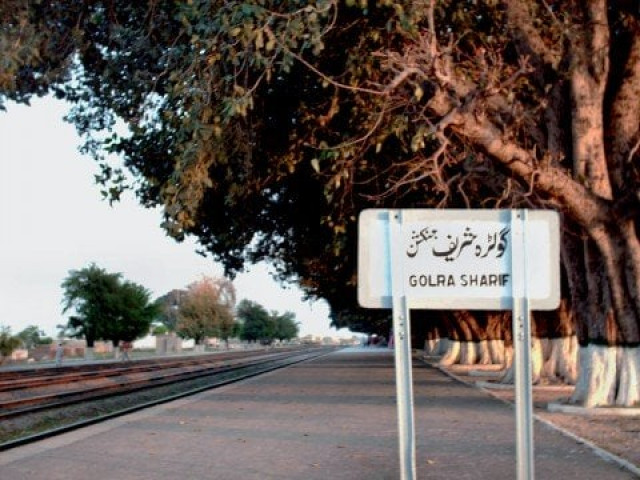Golra station a window into subcontinent’s rail history
Museum displays social impact, anthropological implications of railways on the region

The eerily quiet scene of the Golra Sharif Railway Station.
Built by the British as a small railway station serving the garrison city of Rawalpindi in what is today Sector E-11, it has now been converted into a museum — the Pakistan Railways Heritage Museum — housing relics and memorabilia associated with railways which date back to the British Raj.
It is a junction station and located at 1,994 feet above the sea level. Despite its modest size when compared to some of the grand central railway stations built by the British in cities such as Lahore, and Karachi, it is full of memories. Its stone and terracotta walls have many tales to tell of the hustle and bustle it has witnessed for more than a hundred years.
The station had been set up in 1882 by the British. It was upgraded as a junction in 1912 and served as the main logistics artery for British India during the Afghan military campaigns at the turn of the 20th century.
It has since become a key junction in the all-important trade route which protrudes into Afghanistan through the famous Khyber Pass.
The Railway Heritage Museum, though, was established in October 2003. It contains relics dating back to the inception of railways in the subcontinent by the British to memorabilia depicting the creation of the museum are housed and preserved in this heritage site.
The Rail Heritage Museum is housed in three different halls to contain artefacts reflecting the history of the railway for more than 150 years including almost 100 years of undivided India.
An official of Pakistan Railway, Mohammad Aslam, explained that around 20 trains used to pass through this junction every day at the height of the station’s glory under the British. The junction also provided passage for British royals and aristocrats who would head into the hills for holidays.
The station has a large yard where cranes, trolleys, saloons, locomotives, coaches and tracks are marshalled, portraying the railway's march forward through time. The museum houses a blend of artefacts covering many facets of the railway systems. Mechanical models, signalling systems, communication tools and evolution of operational protocols are preserved and chronologically displayed in the museum. The museum also displays the social impact and anthropological implications of railways on the human geography of multi-racial subcontinent. The open yard displays a wide array of relics which have become extinct on the railway lines around the world.
Its treasures include one of the first steam and electric locomotives, a German postal car, a saloon car used by the last Indian viceroy — Lord Mountbatten, and another saloon car which belonged to the Maharaja of Jodhpur from the Jodhpur railways — given as a wedding present to his daughter.
The museum was envisioned by Ishfaq Khattak, the then Rawalpindi Divisional Superintendent. In 2002, the railway headquarters issued instructions to its all divisions to scrap all the old items including crockery, furniture, locomotives, and saloons for narrow gauge lines.
Khattak saw it an opportunity to accumulate all the relics and create a heritage site. By the end of 2003, this feat was achieved mostly due to the diligence of officers working on the project without any funding from the government. Though the museum was inaugurated officially on March 5, 2007, it had already opened its doors to the public on September 26, 2003.
An official of the Railways while sharing his views about its opening has said that several government and foreign officials alongside a huge crowd of public graced the place and made the event memorable. He said that whether it is the saloon cars of yore or the long-forgotten steam locomotives; this museum has got it all. "Everything has been fully preserved within the limited resources of the organization. A new building has been constructed on the premises which would be converted into an art gallery and a Café", he added.
The setting-up of the Railway Museum was an attempt to preserve and display vintage items and artefacts related to the history of railways at the heritage point. The Golra Railway junction is not only an attraction for tourists but also narrates stories of the past with historical importance.
Published in The Express Tribune, January 13th, 2020.

















COMMENTS
Comments are moderated and generally will be posted if they are on-topic and not abusive.
For more information, please see our Comments FAQ